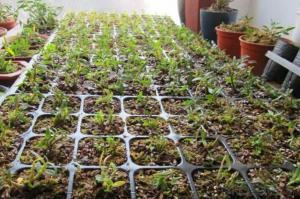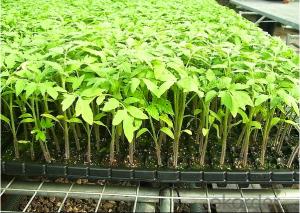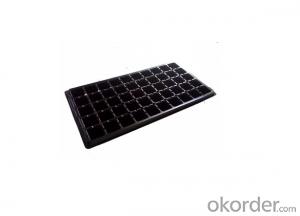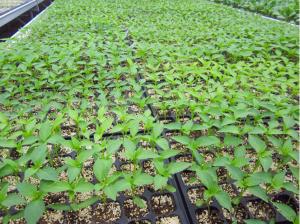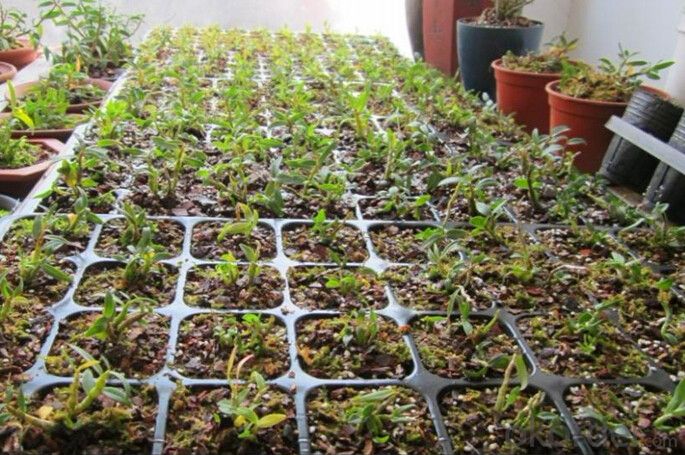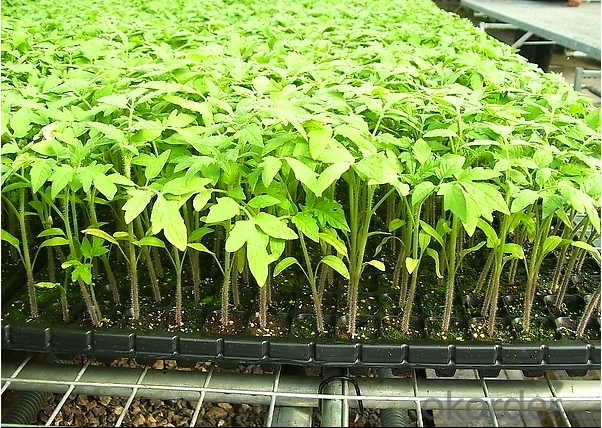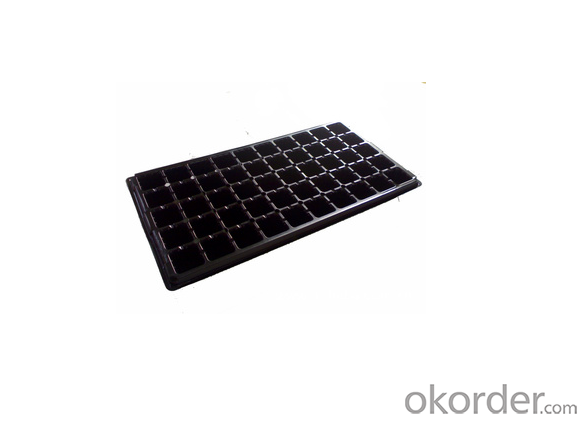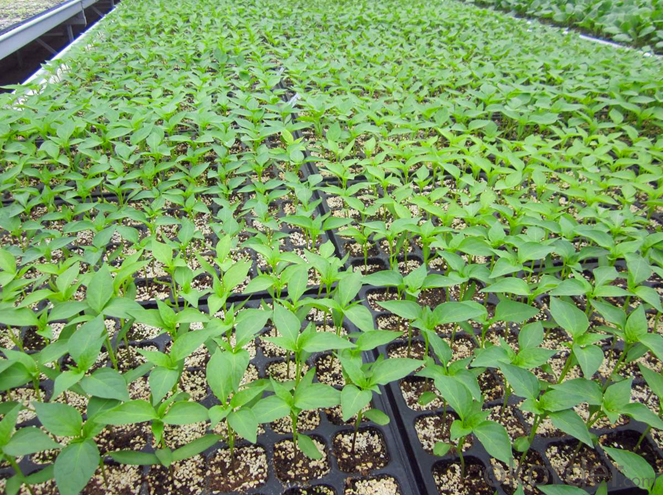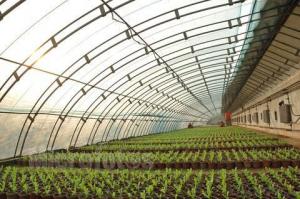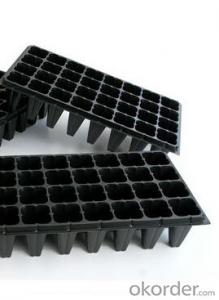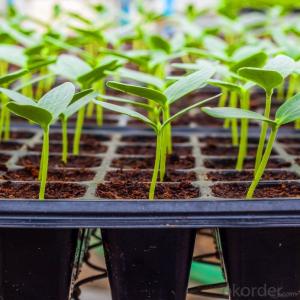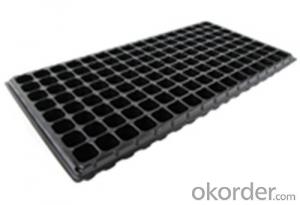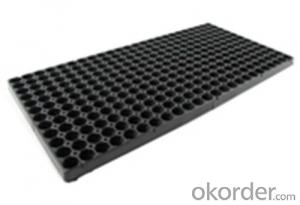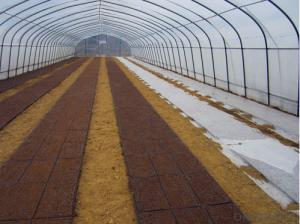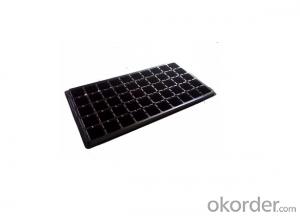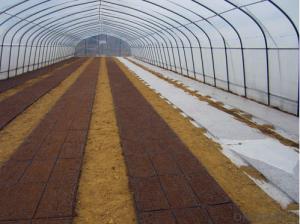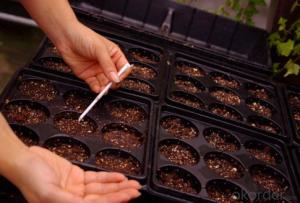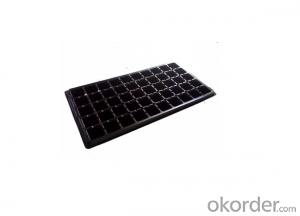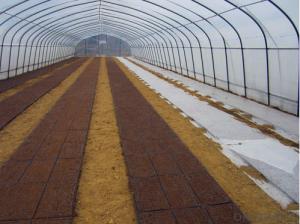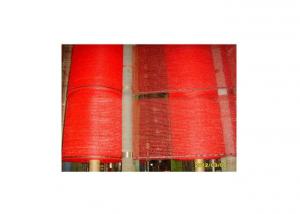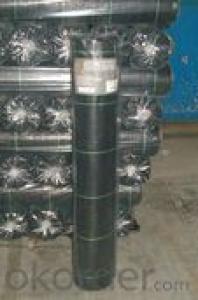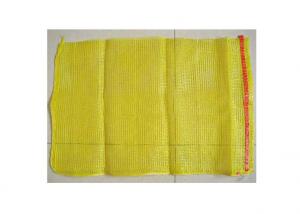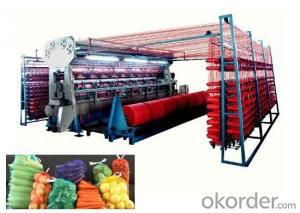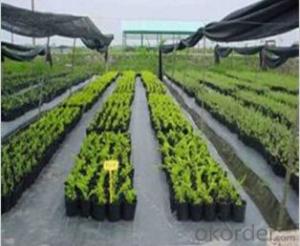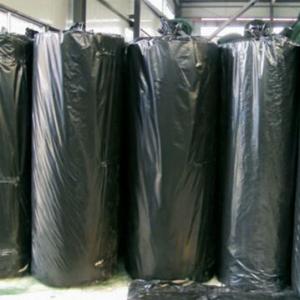Black Plastic Nursery Plug Trays Cell Seed Tray of 105 200 288
- Loading Port:
- China main port
- Payment Terms:
- TT OR LC
- Min Order Qty:
- 3000 pc
- Supply Capability:
- 2000000 pc/month
OKorder Service Pledge
OKorder Financial Service
You Might Also Like
Specification of Plug Trays HIPS Made Plastic Plug Tray for Greenhouse (Growing and Seedling):
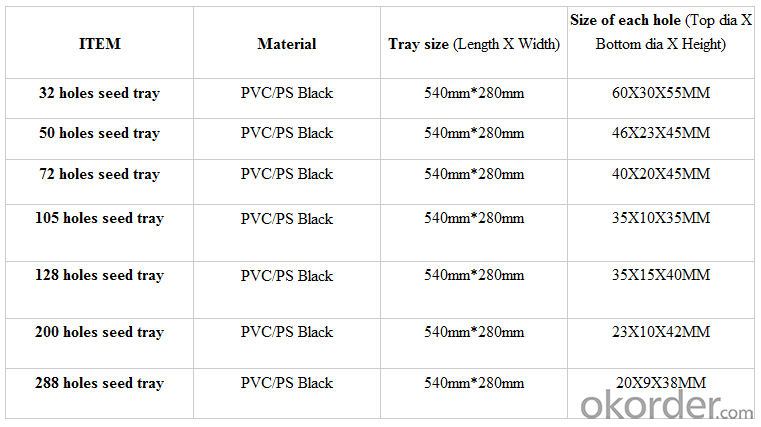
Features of Plug Trays HIPS Made Plastic Plug Tray for Greenhouse (Growing and Seedling):
· Material: HIPS
· Thickness: 0.5mm-1.5mm, Standard:1mm
· Weight: 80g(±5)g-230g(±5)g, Standard weight:155g(±5)g
· Size: length:490mm-540mm, width:190mm-345mm,depth:25mm-150mm
· Standard:540mmX280mm
· Cell count: 18-512
· Package: In Carton
· Warrenty: 8-10 times
Packaging & Delivery
Packing Detail: export standard carton or large bags
Delivery time: 4 million per momth after receipt of deposit
Advantage:
Waterproof, UV-resistant, extrusion-resistant
Easy carry for young seeding plant and grow
Service:
1. Quick, efficient and professional response within 24 hours, 14 hours online services
2. 10 years manufacturing and exporting experience in agriculture field.
3. Technical support and solution by chief engineer.
4. Strict quality control system & team, high reputation in the market.
5. Full range of irrigation products for choice
6. OEM/ODM services
7. Accept sample order before Mass Order
Picture of Plug Trays HIPS Made Plastic Plug Tray for Greenhouse (Growing and Seedling):
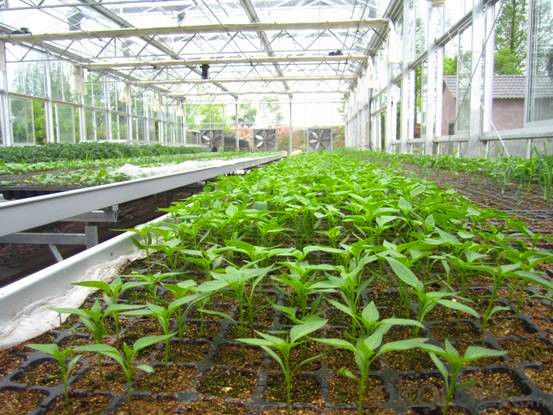
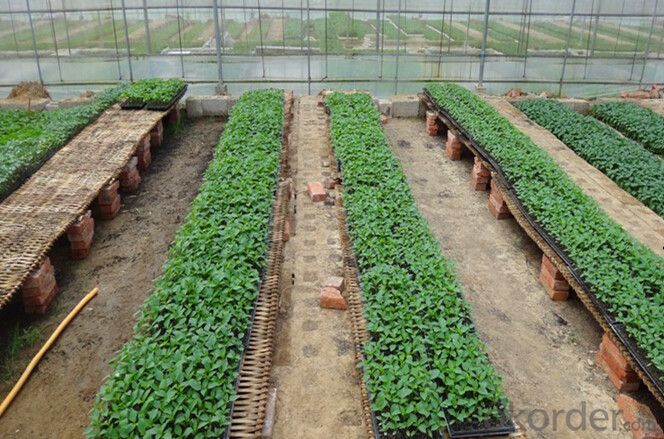
FAQ of Plug Trays HIPS Made Plastic Plug Tray for Greenhouse (Growing and Seedling):
Q: 1.How long is the production time?
A: Usually one to two weeks.
Q: 2.How is the seed tray being packaged?
A: They can be packaged in carton or pallets. Carton size is 1375px*725px*1250px.
Q:3.How many times can the seed tray be used?
A: Under the same environment, it is decided by the thickness. Usually 0.6mm thickness can be used for 1 or 2 times.
1.0 thickness can be used for 3-4 times. 1.5 thickness can be used for 8-10 times.
- Q: How deep are nursery trays?
- Nursery trays are typically around 2-3 inches deep.
- Q: I think they're called thermosetting plastics and can only be heated and shaped once.....
- Yet, thermosetting plastics are one example, although they can be recycled...to some limited extent...by grinding and using as inert filler in some other plastic. Another example is fiberglass-reinforced printed circuit boards. William Gibson has made the comment, in one of his novels, that they were using them...after scraping off the solder and electronics...as materials to laminate for handles of knives, because there was so much of it.
- Q: Will a 2009 Kawasaki KX250F Acerbis Plastic Kit fit on a 2008 Kawasaki KX250F???????????????
- I don't think it will. Doesn't the new bikes plastic come as a whole? I'm pretty sure it won't but you should check either online or at ur local bike shop.
- Q: What are the different sizes available for plastic drip irrigation tapes?
- The sizes available for plastic drip irrigation tapes can vary, but commonly range from 0.25 inches to 1 inch in diameter.
- Q: How are plastic hoop houses beneficial in season extension?
- Plastic hoop houses are beneficial in season extension because they create a controlled environment that helps to extend the growing season. The plastic cover traps heat and insulates the plants, allowing them to survive colder temperatures and continue growing. The hoop structure also protects the plants from wind, rain, and pests, creating a more favorable growing environment. Additionally, plastic hoop houses provide a cost-effective solution for farmers and gardeners to maximize their yield and extend the harvest period.
- Q: What are the different sizes available for agricultural plastic products?
- The sizes available for agricultural plastic products can vary depending on the specific product. However, common sizes range from small sizes such as 3 feet by 50 feet to larger sizes like 40 feet by 100 feet.
- Q: What are some differences in metals and plastics?
- Plastic is a petroleum based synthetic material that does not occur in nature. In other words, totally man-made. Metals are naturally occurring materials that can be mined from the earth in elemental form like iron, silver, gold, etc.
- Q: Two days ago, I was baking a trey of chicken nuggets in the oven when 20 min later or so, I smelled an awful smell. I went to the kitchen and realized I put the chicken to cook on a plastic tray. The tray melted all oven the rack and onto the bottom of the oven. Somehow, none managed to get on about half of the chicken (which I removed from the oven and placed on a plate). I didn't eat any of the chicken from the oven that day, but the next day i saw the plate (and thinking it was some of the good chicken I had made that morning) ate it. There was no plastic on the food and it tasted normal but when I found out what I did, I was really afraid that I could have poisoned myself! Its been over a day and I'm fine, but should I be worried at all? The plastic did not burn or catch on fire, it only melted...
- doh! You will poop out any plastic that you have ingested!
- Q: Is it possible for farmers to utilize recycled plastic mulch in agriculture?
- <p>Yes, farmers can use recycled agricultural plastic mulch. Recycled plastic mulch is a sustainable alternative that helps reduce waste and environmental impact. It can be used in the same way as traditional plastic mulch, providing weed control, conserving soil moisture, and improving crop growth. However, it's crucial to ensure that the recycled mulch meets quality standards to avoid any negative effects on soil health or crop yield. Farmers should source recycled mulch from reliable suppliers and consider the longevity and decomposition rates of the material when making decisions about its use.</p>
- Q: Can nursery trays be used for groundcover plants?
- Yes, nursery trays can be used for groundcover plants. Nursery trays are designed to provide a suitable environment for young plants to grow, and they can be used for various purposes, including growing groundcover plants. They help in organizing and protecting the plants, as well as facilitating easy transportation and transplantation. However, it is important to ensure that the nursery trays are compatible with the specific needs of the groundcover plants in terms of size, drainage, and spacing.
Send your message to us
Black Plastic Nursery Plug Trays Cell Seed Tray of 105 200 288
- Loading Port:
- China main port
- Payment Terms:
- TT OR LC
- Min Order Qty:
- 3000 pc
- Supply Capability:
- 2000000 pc/month
OKorder Service Pledge
OKorder Financial Service
Similar products
Hot products
Hot Searches
Related keywords
